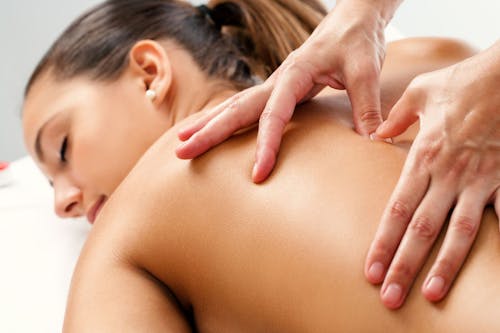You Don’t Have to Deal with Day-to-Day Pain
Dealing with headaches on the daily alone can be very isolating and leave a person feeling exhausted.
Did you know that headaches are the third most common pain complaint? It’s true. Headaches are extremely common and can be so debilitating to the point that they impact a person’s quality of life.
Fortunately, through physical therapy, long term relief is possible. A trained physical therapist can help you achieve immediate pain relief from stress-related headaches as well as any other pain conditions or ailments that may be contributing to your discomfort.
Below we have outlined the different types of headaches and the causes for them, and explain how physical therapy can help.
Common methods of pain relief
Each individual's treatment strategy is different, but many physical therapists use many of the same approaches.
Examples include soft tissue mobilization, heat or ice compression, muscle release, cervical traction, body mobilization, stretching, strengthening, muscle energy techniques, and McKenzie-based spine diagnosis and therapy.
With all treatment plans, you should expect to obtain details that will support your in-office experience.
3 ways PT can help with headaches
Although the end goal of physical therapy is pain relief, there are some critical things along the way that your physical therapist will help you address so that you can achieve a decrease in pain.
3 common PT methods include:
- Improved strength and muscle ability. You'll learn exercises to help strengthen the muscles that control your upper back and neck. This way your posture will improve, and you'll be able to sit or stand for long periods without experiencing pain and discomfort.
- Adjusting the way your neck moves. Your physical therapist can use manual therapy to stretch muscles in your neck to relieve pain and increase range of motion.
- Posture improvement. How your posture is held during the day significantly impacts your pain levels and the likelihood of experiencing a stress-related headache. Your physical therapist will teach you how to improve your posture for a greater quality of life.
How will physical therapy help relieve my headaches?
A licensed physical therapist can conduct a complete physical exam of your body and condition, as well as ask you the appropriate questions regarding your health history.
He or she will be able to figure out what type of headache you’re experiencing and determine the best way to combat it and bring much-needed pain relief.
During your first visit, you can expect most of the following:
- Measurements regarding the range of motion of your shoulders, neck and other relevant parts of the body
- Questions about the types of pain symptoms experienced
- Questions regarding previous injuries to your back, jaw, and head areas
- Tests of your muscle strength
- Examination of your posture while engaged in different activities
- Manual therapy to ascertain the mobility of joints and muscles in your neck
Depending on whether your physical therapist determines that you're dealing with stress-related headaches, you will begin to work together to create a care plan that will successfully meet your physical health goals.
If your physical therapist’s evaluation determines a different type of headache, he or she will likely refer you to a different type of healthcare professional for treatment.
Tension headaches, defined
Tension headaches often occur as a result of high stress, poor posture, problems with the neck or jaw, fatigue, or arthritis. They can also be encountered when you feel nervous or depressed.
Tension headaches occur when the neck and scalp muscles contract or become tense, and people can start experiencing them at any age, although they’re the most common type of headache in adults and older teens.
Stress-related headaches usually begin at the back of the head and travel to the top of the head and eyes. You can also feel pressure on your face around your jaw and cheeks when you experience this kind of headache.
Many people have related this kind of pain to wearing a tight hat, their hair being tightly pulled back, or a squeezing sensation in the head.
What other types of headaches are there?
Most people experience headaches as they grow older. Many headaches go away on their own and don't need medical intervention.
However, severe headaches that recur frequently and interfere with quality of life often demand attention from a professional.
First, you must identify the type of headache you're experiencing. Then from there, a comprehensive treatment plan can be created according to your specific needs for pain relief.
Physical therapists are skilled at diagnosing different types of headaches and can develop simple strategies for pain relief from stress-related headaches.
Below are 10 common types of headaches, according to Healthline:
- Hypertension
- Rebound
- Exertion
- Post-traumatic
- Stress (tension)
- Migraine or sinus
- Caffeine
- Hormone
- Cluster
If you’re unsure what kind of headache you’re experiencing, no problem! Your physical therapist will be able to diagnose and treat it accordingly.
Contact us for relief!
There is no justification why you need to continue living in constant pain and discomfort with so many care options open to you.
Contact Synergy Physical Therapy & Sports Medicine today to experience long-lasting pain relief from stress-related headaches and boost your quality of life!



